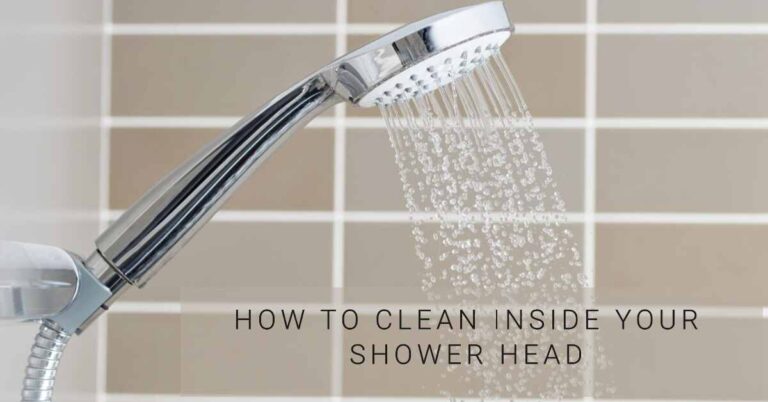Do you want to make your bathroom faucet handles shine like new? Are you tired of seeing hard water stains, dirt, and grime on your faucets? If so, you’re not alone. Many homeowners and renters struggle with keeping their bathroom faucet handles clean and germ-free.
Cleaning bathroom faucet handles is important not only for aesthetic reasons but also for health and safety reasons. Dirty faucet handles can harbor bacteria, mold, and mildew, which can cause infections and allergies. They can also damage your faucets and reduce their lifespan.
Cleaning bathroom faucet handles doesn’t have to be a difficult or expensive task. You can use simple household products and techniques to sparkle and sanitize your faucets.
This article will show you how to clean bathroom faucet handles with these easy and effective methods. You’ll be amazed by how shiny and germ-free they’ll look!
Preparation and Safety Measures
Before cleaning your bathroom faucet handles, you must prepare some tools and materials. You’ll need the following:
- A spray bottle
- White vinegar
- Baking soda
- Dish soap
- A toothbrush
- A soft cloth or microfiber towel
- Rubber gloves
- Eye protection
You’ll also need to check the manufacturer’s instructions for your faucet’s material and finish. Some faucets are more sensitive to certain cleaners than others, so you need to be careful not to damage them. For example, vinegar can corrode brass or bronze faucets if left on for too long. If you’re not sure what kind of faucet you have, test a small area with vinegar first and see how it reacts.
Wear rubber gloves and eye protection before applying any cleaner to your faucet handles. Some cleaners can irritate your skin or eyes, so it’s better to be safe than sorry. Also, ventilate your bathroom well by opening a window or turning on a fan.
Step-by-Step Cleaning Methods
Now that you have everything ready, it’s time to start cleaning your bathroom faucet handles. Here are some step-by-step methods you can use depending on your faucet type.
How to Clean Chrome Faucets
Chrome faucets are shiny and durable but can easily show water spots and fingerprints. To clean chrome faucets, follow these steps:
- Fill a spray bottle with a 50/50 solution of white vinegar and warm water. This natural cleaner will cut through dirt and grime, leaving a fresh scent.
- Spray the solution generously on your chrome faucet handles and let it sit for 10 minutes.
- Use a toothbrush to scrub the crevices and corners of the faucet handles where dirt tends to accumulate.
- Wipe off the vinegar solution with a soft cloth or microfiber towel.
- Polish the chrome faucet handles with a dry cloth until they shine.
Warning: Do not use abrasive cleaners or sponges on chrome faucets. They can scratch the surface and ruin the finish.
How to Clean Brass or Bronze Faucets
Brass or bronze faucets have a warm and elegant look but can tarnish or corrode over time. To clean brass or bronze faucets, follow these steps:
- Mix two tablespoons of baking soda with enough lemon juice to paste. This natural cleaner will remove the tarnish and restore the shine of your faucets.
- Apply the paste to your brass or bronze faucet handles with a soft cloth or microfiber towel.
- Let it sit for 15 minutes.
- Use a toothbrush to scrub the paste into the faucet handles, especially in the hard-to-reach areas.
- Rinse off the paste with warm water.
- Dry the brass or bronze faucet handles with a soft cloth or microfiber towel.
Warning: Do not use vinegar or bleach on brass or bronze faucets. Vinegar can corrode these metals and ruin their appearance. Bleach can cause discoloration and damage the finish.
How to Clean Stainless Steel Faucets
Stainless steel faucets are sleek and modern, but they can also show fingerprints and smudges easily. To clean stainless steel faucets, follow these steps:
- Fill a spray bottle with warm water and add a few drops of dish soap. This mild cleaner will remove grease and dirt from your faucets.
- Spray the solution on your stainless steel faucet handles and wipe them with a soft cloth or microfiber towel.
- Use a toothbrush to scrub stubborn spots or stains on the faucet handles.
- Rinse off the soap solution with warm water.
- Dry the stainless steel faucet handles with a soft cloth or microfiber towel.
- Polish the stainless steel faucet handles with a dry cloth or a stainless steel cleaner.
Warning: Do not use abrasive cleaners or sponges on stainless steel faucets. They can scratch the surface and ruin the finish.
How to Clean Plastic Faucets
Plastic faucets are cheap and easy to install but can also crack or discolor over time. To clean plastic faucets, follow these steps:
- Fill a spray bottle with warm water and add a few drops of dish soap. This mild cleaner will remove grease and dirt from your faucets.
- Spray the solution on your plastic faucet handles and wipe them with a soft cloth or microfiber towel.
- Use a toothbrush to scrub stubborn spots or stains on the faucet handles.
- Rinse off the soap solution with warm water.
- Dry the plastic faucet handles with a soft cloth or microfiber towel.
Warning: Do not use vinegar, bleach, or ammonia on plastic faucets. They can cause cracking, discoloration, or damage to the plastic.
Routine Maintenance Tips
Now that you know how to clean bathroom faucet handles, you might want to keep them that way for as long as possible. Here are some routine maintenance tips that will help you prevent staining and keep your bathroom faucet handles in good condition.
- Wipe down your faucet handles with a soft cloth or microfiber towel after each use. This will remove any water droplets, fingerprints, or smudges that can cause spots or stains.
- Clean your faucet handles at least once a week with a mild cleaner and a soft cloth or microfiber towel. This will remove any dirt, grime, or bacteria that can accumulate over time.
- Use a toothbrush to scrub the crevices and corners of your faucet handles once a month. This will remove hard water deposits or mineral buildup that can affect water flow or damage faucets.
- Polish your faucet handles with a dry cloth or a suitable cleaner once a month. This will restore the shine and luster of your faucets and make them look new.
FAQs
You might have some questions about how to clean bathroom faucet handles. Here are some of the most frequently asked questions and their answers.
Hard water stains are caused by minerals in the water that leaves behind white or brown deposits on your faucets. To remove hard water stains from your faucet handles, you can use vinegar, baking soda, lemon juice, or commercial cleaners designed for this purpose. Apply the cleaner to the stained area and let it sit for 10 minutes. Then scrub it with a toothbrush and rinse it off with warm water.
To disinfect your faucet handles, you can use bleach, hydrogen peroxide, rubbing alcohol, or commercial disinfectants designed for this purpose. Apply the disinfectant to the faucet handles and let it sit for 10 minutes. Then wipe it off with a soft cloth or microfiber towel.
To make your bathroom faucet handles shine, you can use vinegar, lemon juice, olive oil, or commercial polishers designed for this purpose. Apply the polish to the faucet handles and buff them with a dry cloth until they shine.
Some natural cleaners for bathroom faucet handles are vinegar, baking soda, lemon juice, salt, and borax. These ingredients are cheap, safe, and effective for removing dirt, grime, stains, and odors from your faucets.
You should clean your bathroom faucet handles at least once a week with a mild cleaner and a soft cloth or microfiber towel. This will keep them clean and germ-free. You should also scrub them once a month with a toothbrush and polish them once a month with a dry cloth or a suitable cleaner.
Conclusion
Cleaning bathroom faucet handles is not hard if you know how to do it right. By following these easy and effective methods, you can make your faucets sparkle and sanitize them in no time. You’ll also extend their lifespan and improve their performance.
Cleaning bathroom faucet handles is good for your faucets and your health and well-being. You’ll feel more comfortable and confident in your bathroom when you see how shiny and germ-free your faucets are.
So what are you waiting for? Grab your tools and materials and start cleaning your bathroom faucet handles today!


